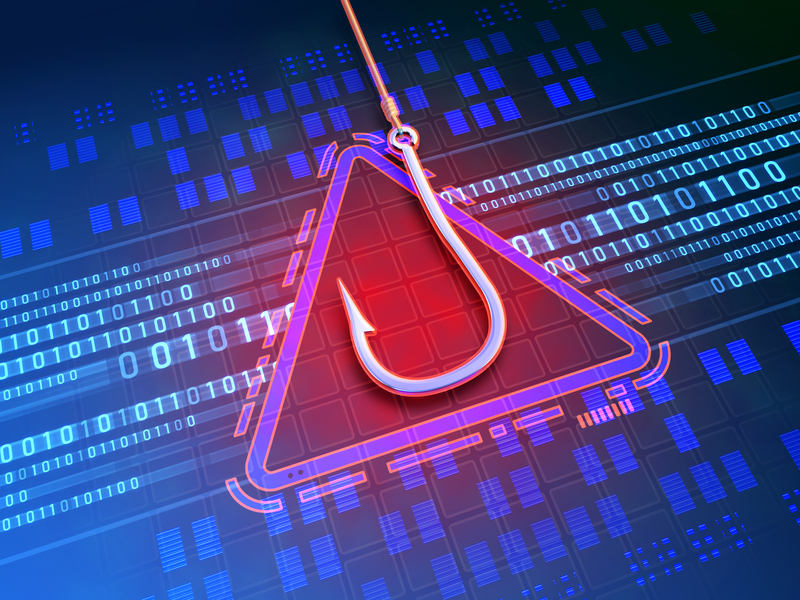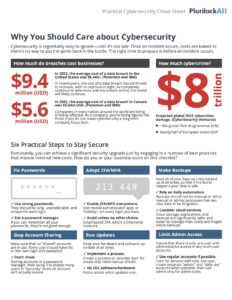Introduction
In the rapidly evolving digital age, where technology intertwines with every aspect of our lives, the realm of cybersecurity has become paramount. Among the various cyber threats, phishing stands out as one of the most prevalent and insidious forms of attack. With its ability to exploit human psychology and deceive even the most cautious individuals, phishing poses a significant risk to individuals, organizations, and society as a whole. In this deep dive, we will explore what phishing is, why it matters in the cybersecurity landscape, and delve into its importance through in-depth analysis. We will also discuss strategies to mitigate the risks associated with phishing attacks.
Understanding Phishing
Phishing is a cyber attack technique that involves tricking individuals into revealing sensitive information such as passwords, credit card numbers, or personal information. This is usually done by masquerading as a trustworthy entity, often through seemingly legitimate emails, websites, or messages. Phishing attacks prey on human psychology, relying on emotions like fear, urgency, or curiosity to manipulate recipients into taking actions that compromise their security.
The Anatomy of a Phishing Attack
Phishing attacks typically follow a structured process:
- Planning and Research: Attackers gather information about potential victims and their online behavior. This can involve exploring social media profiles, company websites, and other sources to craft convincing messages.
- Creating a Bait: Attackers design a message that appears legitimate and trustworthy. This could be an email from a well-known company, a message from a colleague, or a notification from a familiar online service.
- Delivery: The crafted message is sent to a large number of recipients via email, text messages, social media, or other communication channels.
- Deception: The message often contains urgent or enticing content that prompts recipients to take action. This could include clicking on a malicious link, downloading an infected attachment, or entering sensitive information into a fake website.
- Exploitation: Once the victim takes the desired action, the attacker gains access to sensitive information or installs malware on the victim’s device.
- Covering Tracks: Advanced attackers may attempt to cover their tracks to avoid detection, making it challenging to trace the origin of the attack.
Why Phishing Matters
- Ubiquity: Phishing attacks are widespread and can target individuals, businesses, government institutions, and non-profit organizations. The widespread nature of phishing makes it a threat that affects everyone.
- Human Factor: Unlike many other cyber threats that exploit vulnerabilities in software or hardware, phishing targets the human factor. Human psychology is complex and can be manipulated, making people the weakest link in cybersecurity defenses.
- Data Breaches: Successful phishing attacks often lead to data breaches, exposing sensitive information such as personal data, financial details, intellectual property, and login credentials. These breaches can result in identity theft, financial losses, and reputation damage.
- Financial Impact: Phishing attacks can have severe financial repercussions. Businesses may suffer financial losses due to fraud, business disruption, and regulatory penalties resulting from data breaches.
- Reputation Damage: Organizations that fall victim to phishing attacks can experience reputational damage. Customers and partners may lose trust in an organization’s ability to protect their data.
- Gateway to Advanced Attacks: Phishing attacks are often the initial entry point for more advanced cyber attacks. Once attackers gain a foothold through phishing, they can explore further avenues of compromise, potentially leading to devastating breaches.
- Spear Phishing and Business Email Compromise (BEC): Spear phishing targets specific individuals or organizations and is highly personalized, making it difficult to detect. BEC attacks, a type of spear phishing, manipulate employees into transferring funds or sharing sensitive information, resulting in substantial financial losses.
In-Depth Analysis of Phishing Importance
- Psychological Manipulation: Phishing attacks leverage psychological tactics to manipulate human behavior. By exploiting emotions like fear, urgency, and curiosity, attackers override rational thinking and prompt individuals to make hasty decisions, leading to compromised security.
- Social Engineering: Phishing attacks rely on social engineering techniques to create a facade of legitimacy. Attackers impersonate trusted entities, such as banks, government agencies, or colleagues, leading victims to lower their guard and comply with the attacker’s demands.
- Evolution of Phishing: Phishing tactics have evolved significantly over the years. What once were obvious and poorly crafted emails have now become sophisticated messages that are challenging to distinguish from genuine communications.
- Phishing Infrastructure: Cybercriminals have developed complex infrastructures to support phishing campaigns. This includes botnets to send mass phishing emails, bulletproof hosting services to host fake websites, and money mules to launder stolen funds.
- Blurring Boundaries: Phishing attacks are no longer confined to emails. Attackers use SMS messages, social media direct messages, and even voice calls to deceive targets. This blurring of attack vectors makes it harder to anticipate and defend against phishing attempts.
Mitigation Strategies
- Education and Training: Educating individuals about phishing risks and providing training to recognize suspicious emails and messages is crucial. Simulated phishing exercises can raise awareness and teach employees to identify and report potential threats.
- Multi-Factor Authentication (MFA): Implementing MFA adds an extra layer of security by requiring users to provide multiple forms of verification before accessing accounts or systems. Even if attackers obtain passwords, they would need an additional factor to gain access.
- Email Filtering: Employing advanced email filtering solutions can identify and block phishing emails before they reach recipients’ inboxes. These solutions use machine learning to analyze email content, sender behavior, and other factors to identify potential threats.
- Domain Authentication and DMARC: Domain-based Message Authentication, Reporting, and Conformance (DMARC) helps prevent email spoofing by authenticating the sender’s domain. It specifies how email providers should handle unauthenticated emails from the domain, reducing the chances of successful phishing attacks.
- Regular Software Updates: Keeping software, operating systems, and applications up to date helps prevent attackers from exploiting known vulnerabilities to deliver phishing payloads.
- User-Centric Design: Designing user interfaces with security in mind can help users distinguish between legitimate and phishing websites. Browser warnings, such as “Not Secure” indicators for unencrypted websites, can also aid in this process.
- Incident Response Planning: Having a well-defined incident response plan in place ensures swift and effective actions are taken in the event of a successful phishing attack. This minimizes damage and facilitates recovery.
Conclusion
Phishing is a pervasive and ever-evolving cyber threat that capitalizes on human psychology to exploit vulnerabilities. Its significance lies in its ability to breach data, disrupt operations, and damage reputations. Understanding the mechanisms behind phishing, its evolution, and the psychological tactics it employs is essential for effective mitigation. By combining robust cybersecurity practices with continuous education and awareness efforts, individuals and organizations can fortify themselves against the pervasive threat of phishing and its far-reaching impacts. As technology advances, the battle against phishing remains a constant endeavor, demanding the collaboration of security experts, technology developers, and the general public to stay one step ahead of cybercriminals.













